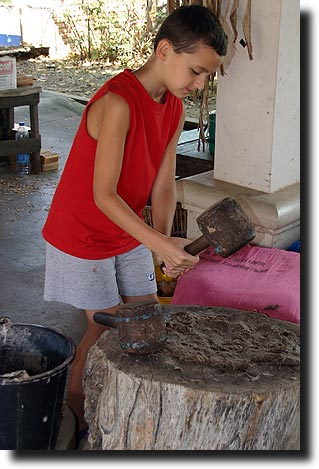
Breck wanted to try his hand at pounding the handmade paper - he found out those mallets are pretty darn heavy!
|
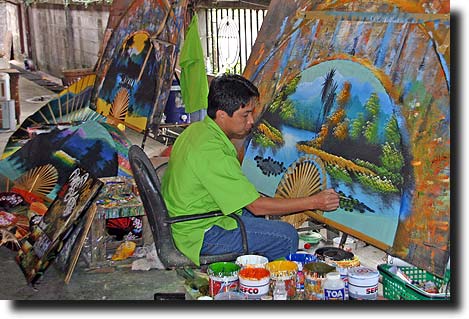
After our initial introduction to Chiang Mai and visit to the night market, we spent one morning doing the touristy thing and visiting the factories that made silk, wood, and umbrellas. The umbrella factory was really interesting and we enjoyed watching them make the frame, cover, and ornamentation.
|
|
|
|
||
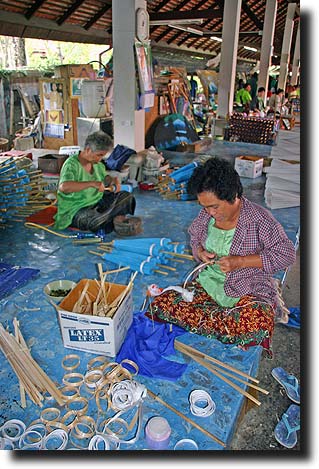
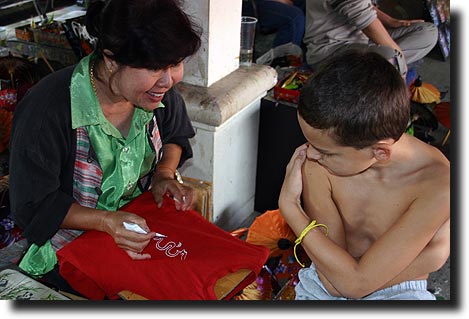 |
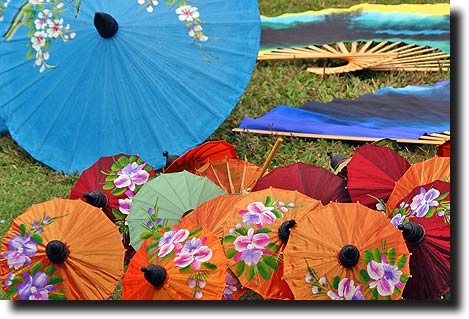
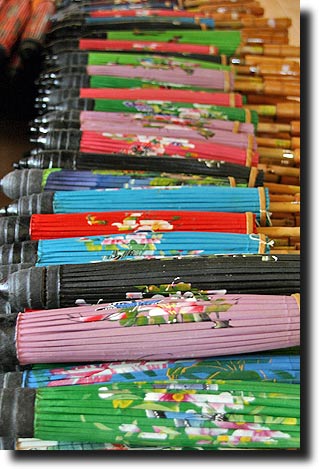 |
|
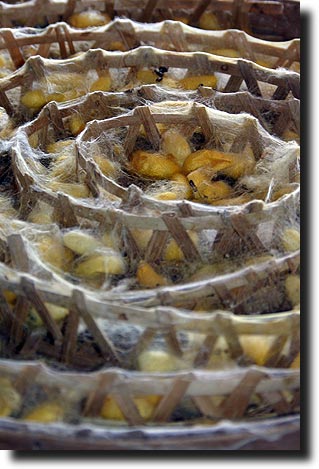 |
The Thai silk industry is quite well established and we enjoyed learning about the process. Below are the caterpillars that eat the mulberry leaves and then spin silk.
|
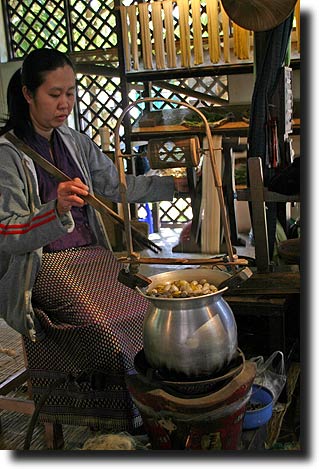 |
And yes, silk harvesters do keep enough pupa alive to raise another batch of eggs and larva. |
|
|
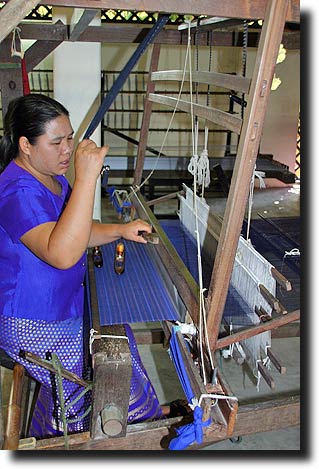 |
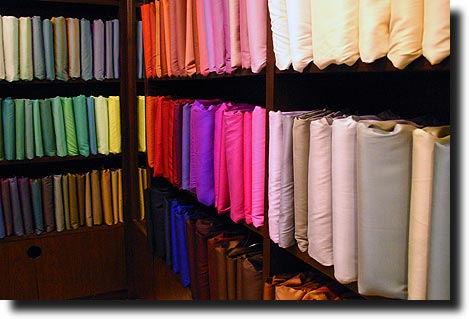
And finally, all that fine fabric ends up on the shelves of your local silk emporium. What great colors! We grabbed a lunch at tha point and then headed off to a temple overlooking the city. |
|
Chiang Mai: Around town - Night Market - Traditional crafts - Doi Suthep - Hiking, rafting, and riding an elephant - Villagers - A day at the zoo Krabi: beach and surroundings |